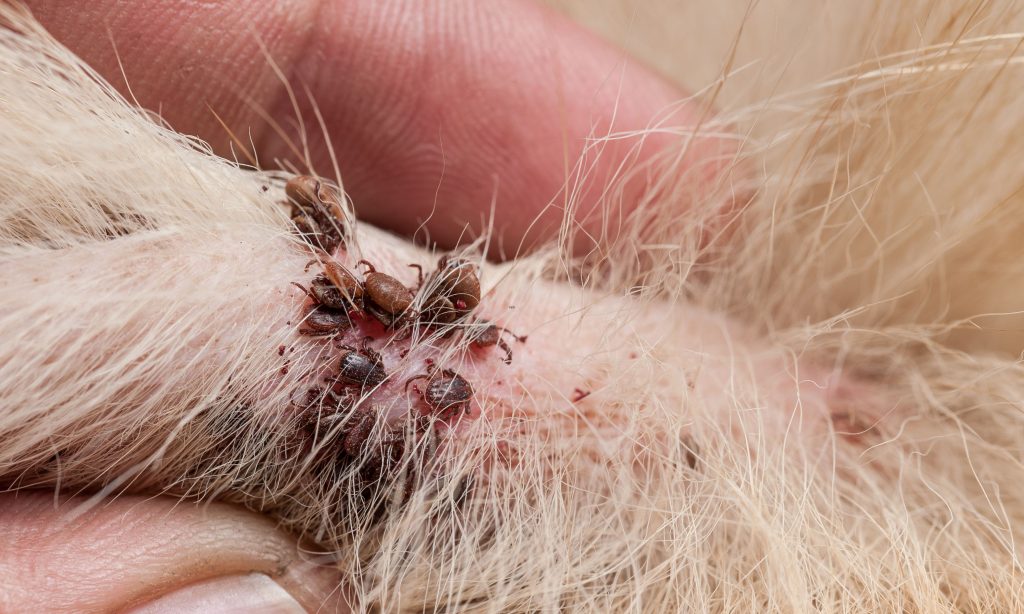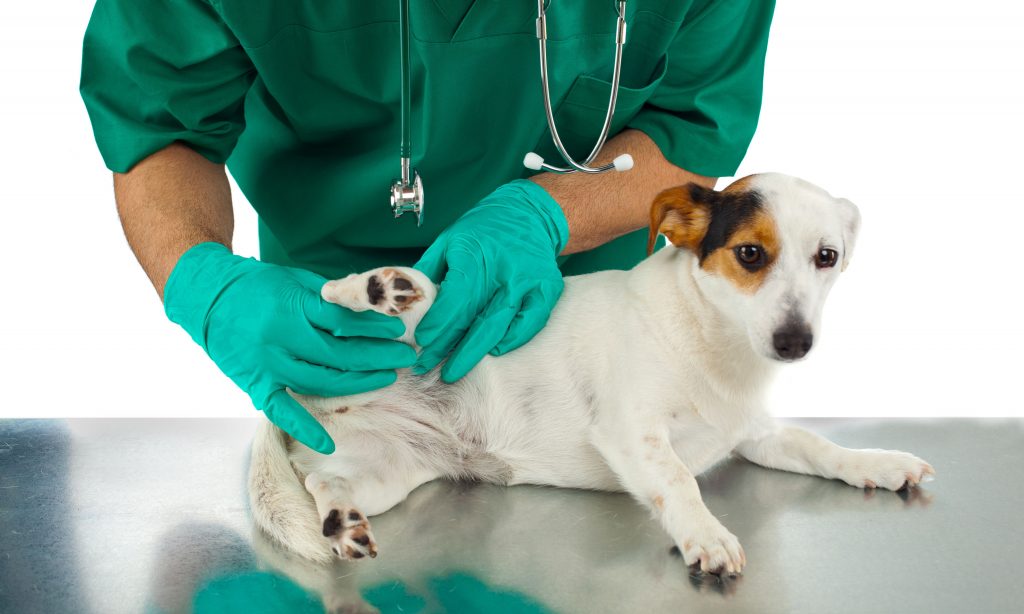This post aims to educate dog parents about flea and tick infestations in dogs, including their causes, symptoms, and effective prevention and treatment options. The aim is to provide accurate and detailed information on how to identify, prevent, and treat flea and tick infestations in dogs.

Flea and tick infestations in dogs are a common problem that can cause a variety of symptoms, including itching, redness, and skin irritation. In this blog post, we will discuss the causes, symptoms, and effective prevention and treatment options for flea and tick infestations in dogs, and provide practical tips on how to keep your furry companion protected.
Causes:
Flea and tick infestations are caused by the presence of fleas and ticks on the dog’s skin and coat. These parasites can cause a variety of symptoms, including itching, redness, and skin irritation. In severe cases, flea and tick infestations can also lead to the formation of crusts and pustules, as well as secondary bacterial infections.
Symptoms:
Symptoms of flea and tick infestations can vary depending on the severity of the infestation, but common symptoms include itching, redness, and skin irritation. In severe cases, flea and tick infestations can also lead to the formation of crusts and pustules. Puppies are also susceptible to flea and tick infestations, and it’s important to be aware of the signs of the condition in them.
Prevention:
Preventing flea and tick infestations in dogs is key to protecting your dog from these parasites. There are various flea and tick preventatives available, such as spot-on treatments, oral medications, and topical sprays, which can be effective in preventing flea and tick infestations. Additionally, keeping your dog’s living area clean and dry, regularly grooming your dog, and keeping an eye on them while they are outside can help prevent infestations.

If your dog is showing symptoms of flea and tick infestations, it is important to consult with a veterinarian. A veterinarian can help to diagnose the condition and recommend appropriate treatment options, which may include flea and tick control products, medicated shampoos, and anti-inflammatory drugs or antibiotics.
Conclusion:
Flea and tick infestations in dogs are a common problem that can cause a variety of symptoms, including itching, redness, and skin irritation. With proper management and treatment, it can be effectively controlled. Preventing flea and tick infestations is key to protecting your dog from these parasites, and there are various flea and tick preventatives available such as spot-on treatments, oral medications, and topical sprays which can be effective in preventing flea and tick infestations. If your dog is showing symptoms of flea and tick infestations, it’s important to consult with a veterinarian as soon as possible. By working closely with a veterinarian and implementing preventative measures, you can help to ensure that your furry companion stays happy and healthy. If you have any questions or concerns about flea and tick infestations in dogs or if you suspect your dog has an infestation, please don’t hesitate to reach out to us through our website for further information and support.

Frequently Asked Questions:
What are flea and tick infestations in dogs?
Flea and tick infestations in dogs are caused by the presence of fleas and ticks on the dog’s skin and coat. These parasites can cause a variety of symptoms, including itching, redness, and skin irritation.
What are the common symptoms of flea and tick infestations in dogs?
Common symptoms of flea and tick infestations include itching, redness, and skin irritation. In severe cases, flea and tick infestations can also lead to the formation of crusts and pustules, as well as secondary bacterial infections.
What causes flea and tick infestations in dogs?
Flea and tick infestations are caused by the presence of fleas and ticks on the dog’s skin and coat. These parasites can be picked up from other animals or from the environment, such as tall grass or wooded areas.
How are flea and tick infestations in dogs diagnosed?
Flea and tick infestations are diagnosed by a veterinarian who will examine your dog’s skin and hair, and may take a skin scraping to confirm the presence of fleas and ticks.
How are flea and tick infestations in dogs treated?
Treatment options for flea and tick infestations may include flea and tick control products, medicated shampoos, and anti-inflammatory drugs or antibiotics.
How can I prevent flea and tick infestations in my dog?
Preventing flea and tick infestations in dogs is key to protecting your dog from these parasites. There are various flea and tick preventatives available, such as spot-on treatments, oral medications, and topical sprays, which can be effective in preventing flea and tick infestations. Additionally, keeping your dog’s living area clean and dry, regularly grooming your dog, and keeping an eye on them while they are outside can help prevent infestations.
Are there any long-term effects of flea and tick infestations on my dog?
In most cases, flea and tick infestations are treatable and dogs can make a full recovery with proper treatment. However, in some cases, flea and tick infestations can lead to secondary bacterial infections or anemia.
Can flea and tick infestations be passed on to other dogs or humans?
Fleas and ticks can spread from animals to humans, but it is not common. However, if your dog has a flea and tick infestation, it’s important to maintain good hygiene and keep their living area clean to prevent the spread of any secondary infections. It is also important to be aware that fleas and ticks can spread to other animals in your home and it’s important to treat all pets in the household to prevent re-infestation. Additionally, it is important to be aware that certain species of ticks can transmit diseases to both humans and animals, so it is important to remove ticks promptly and properly and to be vigilant about checking for tick bites on both yourself and your pet.



